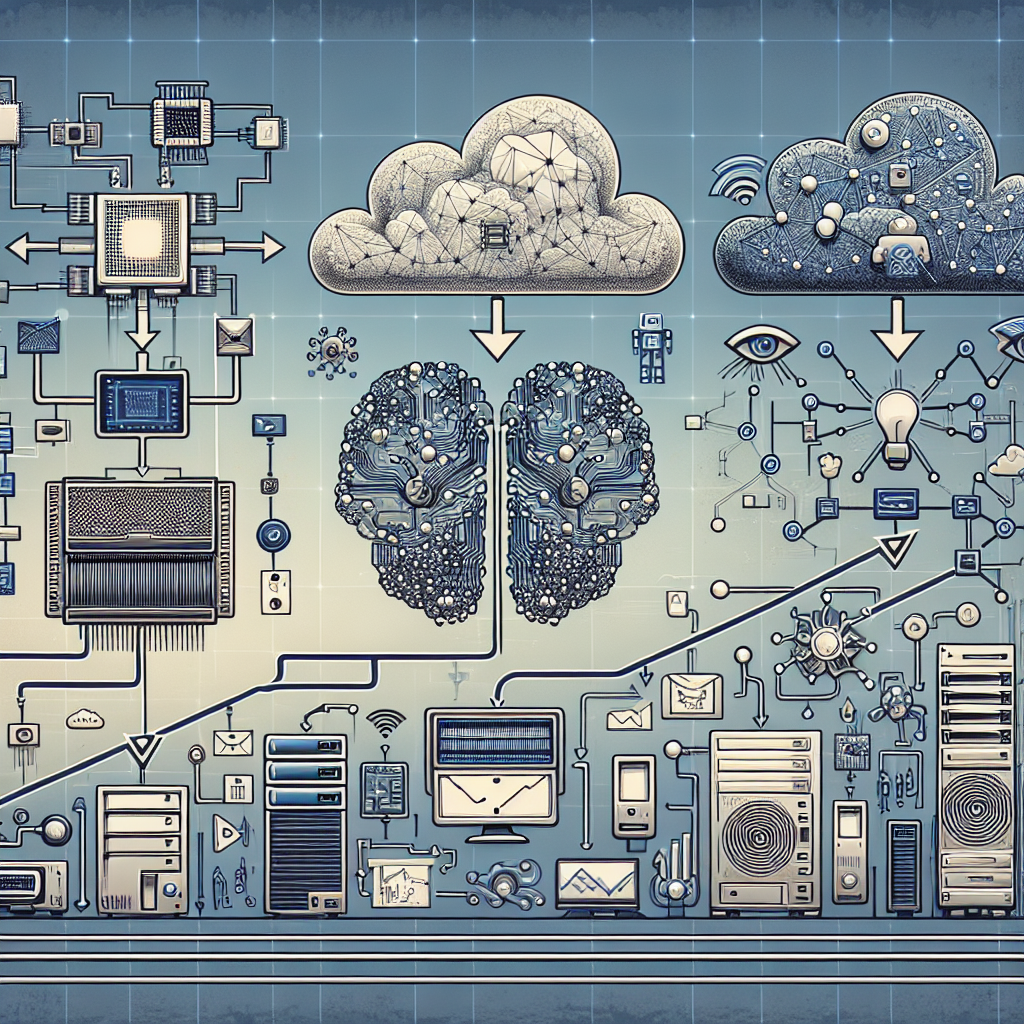The Evolution of AI in Cloud Deployment
Artificial Intelligence (AI) has been one of the most transformative technologies of the 21st century, revolutionizing industries from healthcare to finance to transportation. One of the key drivers of AI’s widespread adoption has been the rise of cloud computing, which has enabled businesses of all sizes to access the computing power and storage necessary to deploy AI applications.
In this article, we will explore the evolution of AI in cloud deployment, from its humble beginnings to its current state as a powerful tool for driving innovation and efficiency in businesses around the world.
Early Days: On-Premise AI
In the early days of AI, businesses had to invest in expensive hardware and software to develop and deploy AI applications. This limited the adoption of AI to large enterprises with the resources to build and maintain their own AI infrastructure.
However, as cloud computing began to gain traction in the mid-2000s, businesses started to realize the potential of using the cloud to host AI applications. Cloud providers like Amazon Web Services (AWS), Microsoft Azure, and Google Cloud Platform began offering AI services that could be accessed on a pay-as-you-go basis, making it much more affordable for businesses to experiment with AI.
The Rise of Machine Learning
One of the key breakthroughs in AI that drove its adoption in the cloud was the rise of machine learning. Machine learning algorithms enable computers to learn from data and make predictions or decisions without being explicitly programmed. This has enabled businesses to automate tasks, personalize customer experiences, and optimize processes in ways that were previously impossible.
Cloud providers began to offer machine learning services that made it easy for businesses to train and deploy machine learning models without having to worry about the underlying infrastructure. These services typically include pre-built algorithms, data processing tools, and model training capabilities, making it easy for businesses to get started with AI.
The Emergence of Deep Learning
Deep learning is a subset of machine learning that uses neural networks to model complex patterns in data. Deep learning has been particularly effective in areas like image recognition, natural language processing, and voice recognition, leading to breakthroughs in areas like self-driving cars, virtual assistants, and medical imaging.
As deep learning algorithms became more popular, cloud providers began to offer specialized hardware and software designed to accelerate the training and deployment of deep learning models. For example, Google’s Tensor Processing Units (TPUs) are custom-built chips that are optimized for running deep learning algorithms, while NVIDIA’s GPUs are widely used for training deep learning models in the cloud.
The Convergence of AI and Cloud Computing
Today, AI and cloud computing have become inseparable, with businesses of all sizes using the cloud to deploy AI applications that drive innovation and efficiency. Whether it’s using machine learning to personalize recommendations for customers, using deep learning to analyze medical images for signs of disease, or using natural language processing to automate customer service interactions, AI has become a critical tool for businesses looking to stay competitive in a rapidly evolving marketplace.
The Future of AI in Cloud Deployment
Looking ahead, the future of AI in cloud deployment is likely to be characterized by even greater integration between AI and cloud computing. As AI algorithms become more sophisticated and require more computing power, cloud providers will continue to invest in specialized hardware and software to support the development and deployment of AI applications.
In addition, advances in areas like edge computing, 5G networks, and quantum computing are likely to further enhance the capabilities of AI applications in the cloud. For example, edge computing enables businesses to process data closer to where it is generated, reducing latency and enabling real-time decision-making, while 5G networks provide faster and more reliable connectivity for AI applications.
FAQs
Q: What are some examples of AI applications in the cloud?
A: Some examples of AI applications in the cloud include personalized recommendations for e-commerce websites, predictive maintenance for manufacturing equipment, fraud detection for financial transactions, and virtual assistants for customer service interactions.
Q: How can businesses get started with AI in the cloud?
A: Businesses can get started with AI in the cloud by first identifying a use case that can benefit from AI, such as optimizing a business process or improving customer experiences. They can then choose a cloud provider that offers AI services and tools, such as AWS, Azure, or Google Cloud Platform, and begin experimenting with building and deploying AI applications.
Q: What are some of the benefits of using AI in the cloud?
A: Some of the benefits of using AI in the cloud include cost savings, scalability, flexibility, and ease of deployment. By using the cloud to host AI applications, businesses can access the computing power and storage they need on a pay-as-you-go basis, without having to invest in expensive hardware or software.
In conclusion, the evolution of AI in cloud deployment has been driven by advances in machine learning, deep learning, and cloud computing, enabling businesses of all sizes to access the computing power and storage necessary to deploy AI applications. As AI continues to play an increasingly important role in driving innovation and efficiency in businesses around the world, the future of AI in the cloud looks brighter than ever.

